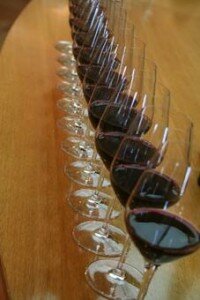 One of the most frequent questions I am asked on the blog is about whether a bottle of old wine is good to drink or whether it should be kept a while longer. Unfortunately more often than not the bottle in question is a wine that wasn’t made with longevity in mind.
One of the most frequent questions I am asked on the blog is about whether a bottle of old wine is good to drink or whether it should be kept a while longer. Unfortunately more often than not the bottle in question is a wine that wasn’t made with longevity in mind.
It’s a common misconception that all wine gets better if it is aged. Someone’s long treasured bottle of vintage 1989 often turns out to be not only worthless but undrinkable.
My rule of thumb is that if you can’t trace the chateau or estate that made the wine (i.e. if no one has ever heard of it) then you are best off drinking it.
You have nothing to lose, so why not? Obviously if it turns out to be a 1787 Chateau Lafite, celebrate! (Or ring the fraud squad lest it turns out to be a fake).
 Most wines today are made to be drunk quickly, a year or so after they have been made. In our modern, consumer driven societies speed is of the essence and the majority of us want ‘approachable’ inexpensive wines that we can enjoy ‘now.’
Most wines today are made to be drunk quickly, a year or so after they have been made. In our modern, consumer driven societies speed is of the essence and the majority of us want ‘approachable’ inexpensive wines that we can enjoy ‘now.’
High tech has hit the vineyards and let’s face it, without it wines that were made in the past under old fashioned conditions and drunk soon after they were bottled would have been pretty rough. Not so nowadays.
The interesting thing is that by vamping up production, applying science and digital know how it has boosted the quality of young wines – and this has affected our current appreciation of wine with the trend being more towards fruit forward wines.
 However the drawback is that these wines are made for easy drinking and subsequently can disappoint if you are looking for something more memorable. Aged fine wines are a different thing entirely.
However the drawback is that these wines are made for easy drinking and subsequently can disappoint if you are looking for something more memorable. Aged fine wines are a different thing entirely.
As a fine wine ages the rough edges of its youth melt away: harsh tannins smooth out, the wine becomes softer in the mouth, acidity mellows, aromas develop, different flavours come to the fore, it gains complexity and the finish lengthens.
Of course the wine has to be good in the first place to age gracefully and this is down to the quality of the grapes, their variety, the wine region and the wine making practices.
Wine will reach a point in its aging process when it reaches its peak (drinking window). Once beyond that it will begin to taste hollow. An aged wine will also change colour as it matures – the older a red wine becomes the more its colour fades.
You’ll find that with Grand Crus Classés that are made to age for decades most wine critics will estimate their ‘drinking window’ as a guideline as to how long to leave them cellared before drinking.
But – and it’s a big but – not everyone can afford to  indulge in old vintages of fine wines. So, can older vintages from other, less prestigious wine producers offer a good alternative? Yes and no.
indulge in old vintages of fine wines. So, can older vintages from other, less prestigious wine producers offer a good alternative? Yes and no.
It depends on the vintage and it depends on the wine producer. Choosing wines from a supermarket shelf can be a minefield but most independent wine merchants are only too happy to advise you.
Most of us have spent time and effort sampling and selecting the better vintages from good producers to tempt your tastebuds . . . and we know their drinking windows!

